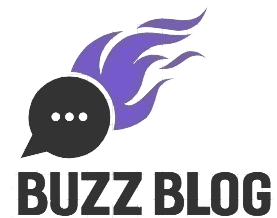The Competitive Advantage of Faster Cross-Team Alignment
No team can do well by itself. Sales needs help from operations, marketing needs help from product teams, and customer service needs help from all aspects of the firm. When things aren’t in sync, everything takes longer. Decisions take longer, work is duplicated, and opportunities are missed. Companies that can rapidly and dependably get their teams on the same page usually do better than their competitors. Top firms are finding that current project management tools give them the integrated platform they need to bring departments together and keep them working together, instead of using a number of disparate systems.
Discover more insights in our handpicked related article!
Lark Messenger: keeping conversations focused

Lark Messenger
Most of the time, communication is what gets in the way of alignment. When teams get information through email, chat apps, and informal updates, they don’t know what their most important tasks are. Lark Messenger clears up this confusion by offering everyone a space to chat. Dedicated project channels keep conversations on track, threaded answers preserve the context, and pinned messages make important decisions stand out.
Imagine a team from different departments getting ready to launch a new product. Sales needs talking points, marketing wants campaign materials, and operations needs updates on stocks. When people use Messenger to work together, they can all see the same information, which helps them get on the same page more quickly. Messenger makes sure that conversations are clear, well-organised, and easy to act on right away.
Lark Calendar: visibility into shared priorities

Lark Calendar
When teams work on separate schedules, alignment usually doesn’t happen. Everyone can see their schedules in one place using the Lark Calendar, so everyone knows the exact agenda. Two characteristics that make it easier to organize things around the world are automatic time zone adjustments and checking the other person’s availability (Busy, Awaiting, Maybe). Leaders may also see when the next event happen on shared calendars, which helps them handle disagreements before they hinder delivery.
Imagine a design firm that has offices in more than one country and is working on a project for a customer. The calendar gives you all of your design reviews, customer visits, and production due dates in one place. Teams not only know what their specific tasks are, but they also know how those tasks fit into the overall project. This makes sure that everyone is on the same page every day.
Lark Docs: collaborative planning without duplication

Lark Docs
When plans are kept in static files, they often get lost in translation. Lark Docs fixes this by letting users work on the same documents at the same time. Several individuals can edit at once, post comments to give feedback, and observe changes in the version history. Docs also connects directly to other workflows, so plans can move smoothly from planning to doing.
Think about a consulting company drafting a plan for a customer. In the same document, analysts write the first draft, managers make it better, and partners check over the final proposals. Instead of having to cope with conflicting versions, the team works from one source of truth. Docs helps everyone stay on the same page, which makes it less likely that people will talk to each other or do the same thing twice.
Lark Approval: structured processes that accelerate agreement

Lark Approval
One of the biggest things that stands in the way of alignment is waiting for sign-offs. If workers have to hunt down permissions that arrive through email chains, projects can be delayed for days. Lark Approval keeps things on schedule by digitising requests and sending them automatically. Everyone knows what the status of a request is, and supervisors are reminded to act quickly to avoid delays.
The benefit is considerably higher when you use an automated workflow. For example, when a manager authorises a marketing budget, they can get a message right away through Messenger, manually add the review date to Calendar, and check it off in the system. Approval speeds up this process, which takes out bottlenecks and makes it easier for departments to work together more rapidly.
Lark Meetings: connecting discussions to action

Lark Meetings
Everyone should be on the same page at meetings, yet too often, talks don’t lead to action. Lark Meetings fill this gap by including agendas, notes, and results in the bigger picture. People send each other their agendas ahead of time, take notes together in Docs, and do tasks from follow-up activities right in the meeting interface.
Picture a meeting where representatives from different departments get together to talk about a new service. Everyone departs with full notes after a Lark Meeting. Everyone sees the same outcomes and knows who is in charge of what needs to be done next. This makes sure that what was spoken about in the meeting gets done and not just talked about.
Lark Base: structured alignment across the organization

Lark Base
It’s harder to keep everyone on the same page when firms grow. Lark Base helps remedy this by giving you a means to organise your data, workflows, and tasks. Different teams can look at the same data in different ways, which cuts down on duplication while retaining a common base.
For instance, a retail company that is expanding into new areas uses Base to keep track of its marketing efforts, supplier contracts, and stock. Sales teams may look at their pipeline, operations can keep an eye on deliveries, and finance can keep track of costs—all on the same platform.
Conclusion
Getting teams to work together faster isn’t just a way to save time; it’s also a way to get ahead of the competition. Companies that quickly align make decisions more quickly, finish projects on time, and take advantage of chances before their competitors do. Considering that, Lark stands not only as a project management software, but also as a unified platform for different uses. Lark Messenger lets people chat with each other, Calendar syncs schedules, Docs makes planning a cooperative effort, Approval keeps processes moving, Meetings connect decisions to actions, and Base offers everything a structured system that ties it all together.
Companies that perceive alignment as a core ability, not simply a good side effect, will do well in the future. They use connected platforms to change alignment from a problem into strength. This makes sure that growth and flexibility go hand in hand.
Don’t miss our top pick—see why this post is trending now!

